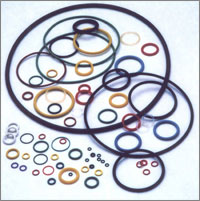The Challenger Disaster of ’86 Prompted Current O-Ring Design and Safety
by Jenny Knodell, IQS Editor

Many people remember 1986 by the neon colored leggings, popping Glass Tiger cassettes into new Walkmans and going to see Top Gun numerous times. But what sticks out in everyone’s mind about this year was the random disasters. 4 months in, the Chernobyl plant in the Ukraine exploded, creating the worst nuclear disaster of all time, and the US Challenger exploded a minute after take off. I was too young to remember any of this, being -8 months at the time, but the lasting effects of these accidents are still felt, even by those who weren’t around. While the Soviet Union was dealing with a catastrophic explosion and deadly radiation penetrating their cities, the United States was mourning the passing of seven fallen astronauts.

The Challenger Disaster
The morning of January 28th was unseasonably cold for coastal Florida. That day the temperature was at freezing (32 degrees F). Although concern was expressed, the lift off was not postponed on account of the vice president stopping by to watch the Challenger’s launching. A mere minute after the Challenger reached the air, something went terribly wrong in the engine compartment, prompting the ship to catch fire, break apart and free fall into the ocean. Upon investigation, the problem was discovered—a small, round-shaped piece of rubber was the cause of this disaster. Referred to as an O-ring, these tiny rubber pieces are used for sealing applications between connecting parts in machinery, specifically aircrafts. How could such a simple, seemingly insignificant component to massive, complex and cutting edge technology do so much damage?

Aerospace O-Rings
In the case of the Challenger, rubber O-rings made of FKM, a high performance rubber, were used to form seals inside the fuel tank. Because it was so cold the night before and morning of the Challenger launching, the O-rings became rigid and failed to expand, forming a gap for the gas to leak through, instead of sealing the joint. The leaking gas caught fire, and quickly escalated into the Challenger Disaster. It turns out that FKM, when exposed to freezing temperatures, performs very poorly by turning brittle and rigid. As a result, both O-ring manufacturers and aerospace engineers made significant changes to prevent O-ring failure from ever happening again.

Feynman discovers the FKM O-Rings become
brittle when they are doused in ice water.
Today, O-rings are always tested under harsh conditions and strict regulations in packaging, expiration and quality control have been implemented. Fuel tanks in aerospace crafts have been redesigned to use 3 O-rings instead of 2, and now contain heaters for temperatures below 50 degrees F. More elastic materials like silicone, Teflon and Viton are now used to produce O-rings, and additives like conductive carbon-black prevent the build up of electrical charge, which in turn reduces the risk of ignition in fuel lines. Since the execution of these changes, not a single O-ring has malfunctioned or caused aircraft failure of any kind. As unfortunate and tragic as the Challenger disaster was, the safety improvements it sparked has likely prevented many other O-ring disasters.


 Castings & Forgings
Castings & Forgings Bulk Material Handling
Bulk Material Handling Electrical & Electronic Components
Electrical & Electronic Components Flow Instrumentation
Flow Instrumentation Hardware
Hardware Material Handling Equipment
Material Handling Equipment Metal Cutting Services
Metal Cutting Services Metal Forming Services
Metal Forming Services Metal Suppliers
Metal Suppliers Motion Control Products
Motion Control Products Plant & Facility Equipment
Plant & Facility Equipment Plant & Facility Supplies
Plant & Facility Supplies Plastic Molding Processes
Plastic Molding Processes Pumps & Valves
Pumps & Valves Recycling Equipment
Recycling Equipment Rubber Products & Services
Rubber Products & Services